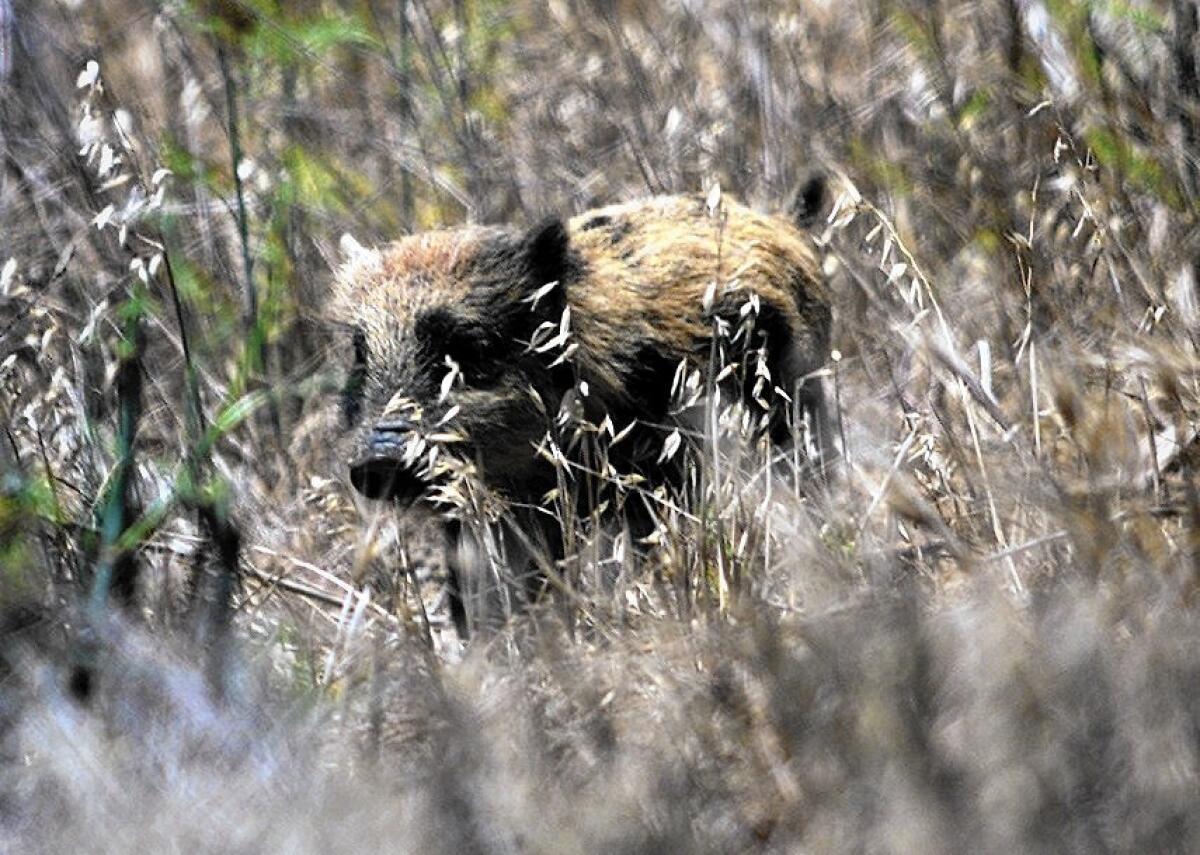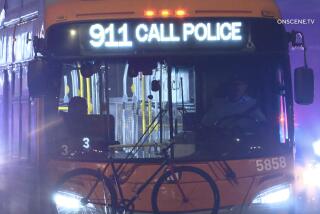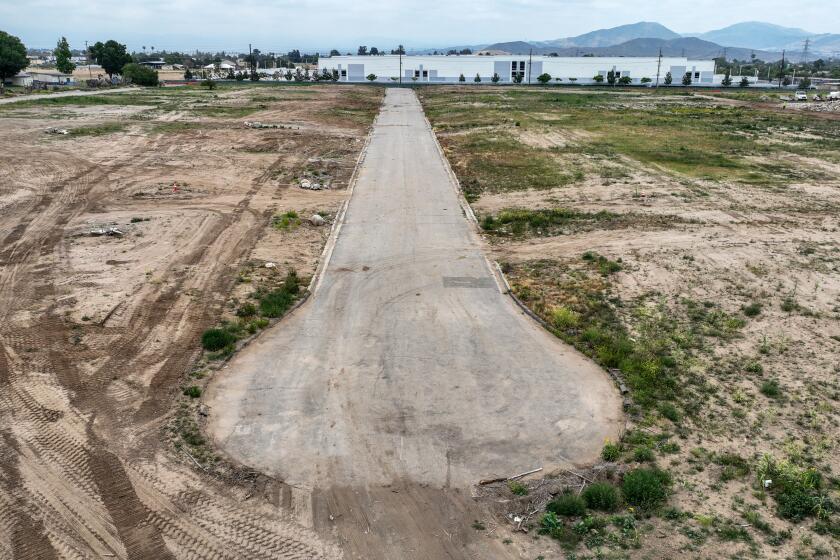Invasive wild pigs nearly wiped out in San Diego County

Feral pigs that scientists once feared could pose a serious threat to fragile ecosystems in San Diego County’s backcountry have been all but eradicated by government-contracted hunters and years of devastating drought that have slowed breeding.
Officials say it appears only eight wild hogs remain in the county, based on data from hundreds of wildlife-tracking cameras and other forms of monitoring.
NEWSLETTER: Get the day’s top headlines from Times Editor Davan Maharaj >>
Professional hunters working with a consortium of federal, state and local agencies have trapped and euthanized about 150 of the animals over the last five years, some leaders in the effort said.
“The work that has been done through our group has helped quite a bit,” said Megan Jennings, a San Diego State University research ecologist in charge of the monitoring program for the Inter-governmental Feral Pig Group. “It’s been a real targeted effort, wide-scale across the county, and been a major contributor in getting the numbers down.”
Wild hogs began showing up in the county around 2007, though no one knows for sure how they arrived. In 2010 various wildlife agencies began tracking and trying to kill the pigs, and in 2014 an official eradication effort was launched. At that time, it was estimated that perhaps 1,000 of the animals were roaming the eastern and southern portions of the region.
The pigs typically travel in groups of up to 15, known as sounders, rooting around in fields and churning up soil like a Rototiller. Adult males can reach up to 300 pounds.
Because the pigs breed quickly, the concern was that they would multiply and become an overwhelming ecological problem, destroying riparian habitats where endangered and threatened birds and animals thrive.
That doomsday scenario didn’t pan out, and officials now say the 2014 estimates were probably way too high, in part because they weren’t based on firm data and didn’t take into account the ongoing drought.
See more of our top stories on Facebook >>
“When the project started there were numbers being thrown around of 300 to 500 pigs, even 3,000 to 5,000 pigs,” said Ryan McCreary, a wildlife biologist for the U.S. Department of Agriculture Wildlife Services. “When we started using trail cameras in several different locations it became obvious the population was much smaller.”
The parched ecosystem helped keep the wild hogs in check.
“If you release a population of pigs or goats or any animal and they don’t know where any water is or what their resources are, they’re going to struggle, particularly if there is any kind of drought,” McCreary said.
Jennings said the monitoring cameras and evidence collected by field researchers indicate that only about eight pigs remain, though there may be a few additional stragglers.
Clark Winchell of the U.S. Department of Fish and Wildlife said most of the pigs were captured and killed by placing “a brew — a fermented, stinky bait” inside a pen.
Cameras would then record the activity in the pen, and when it appeared all of the pigs in the area had gathered around the bait, the corral door was closed. The trapped pigs were then killed and their carcasses typically buried.
Wild hogs can carry more than 24 diseases, according to the Centers for Disease Control, which publishes a pamphlet on how hunters should protect themselves when handling the animals.
After the pigs were spotted in San Diego County, the first mass eradication occurred on Warner Ranch near Lake Henshaw in 2012 when 30 pigs were captured.
Since then efforts have largely been centered in the southeastern part of the county, sometimes on private ranches south of Interstate 8, and in the Cleveland National Forest in places such as the Hauser Wilderness Area and near Cottonwood Creek, not far from Pine Valley.
County officials had feared the hogs would move into county parks, but no pigs were taken in those areas, officials said.
Private hunters were also encouraged to take out hog permits, but Winchell said they killed few pigs — partly because most weren’t big enough to make good trophies. Pig hunting is difficult because the hogs are often found in some of the remotest, most difficult terrain in the backcountry, he said.
Winchell said there had been no reported sightings in vulnerable areas such as Palomar Mountain, although just a few weeks ago an unverified sighting of a single pig was reported in the Julian area.
“We’ve been earnestly working at this for a number of years,” Winchell said. “It has been very successful.”
Exactly where, when and how the pigs were introduced to the county is unclear. In 2007, the San Diego Union-Tribune reported that 30 wild hogs — brought to the region by someone who wanted to start a hunting program — had been released in the wild behind the El Capitan Reservoir. The report was confirmed by a game warden, but denied by others in the area.
McCreary said it appeared that there were several intentional releases in the last decade.
Whatever the source, by 2012 a Feral Pig Working Group comprised of numerous public agencies and private conservation groups had been formed, and state and federal officials were preparing environmental assessment plans to sanction the use of trapping, hunting with dogs, aerial hunts and traditional hunting to combat the problem.
At the time some animal rights activist opposed the plan, saying it was cruel to kill the pigs that were doing nothing other than trying to survive. But officials said that trapping and relocating them made little sense since the pigs are not wanted anywhere, and that logistically it would have been almost impossible.
Jones writes for the San Diego Union-Tribune.
ALSO
Wrestling star Chyna found dead at Redondo Beach home
Global warming has made the weather better -- but don’t get used to it
Harriet Tubman is the next face of the $20 bill; $5 and $10 bills will also change
More to Read
Sign up for Essential California
The most important California stories and recommendations in your inbox every morning.
You may occasionally receive promotional content from the Los Angeles Times.










